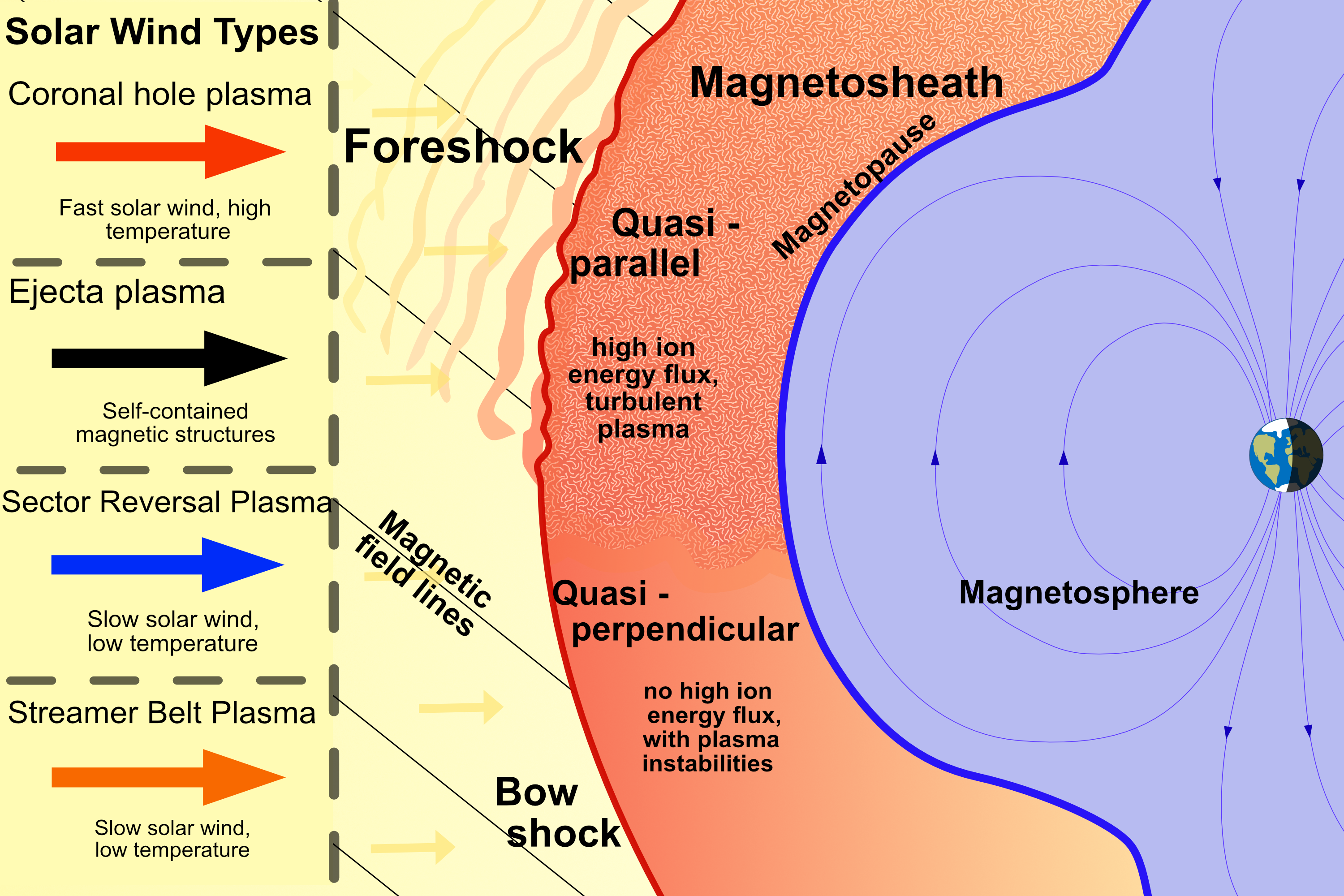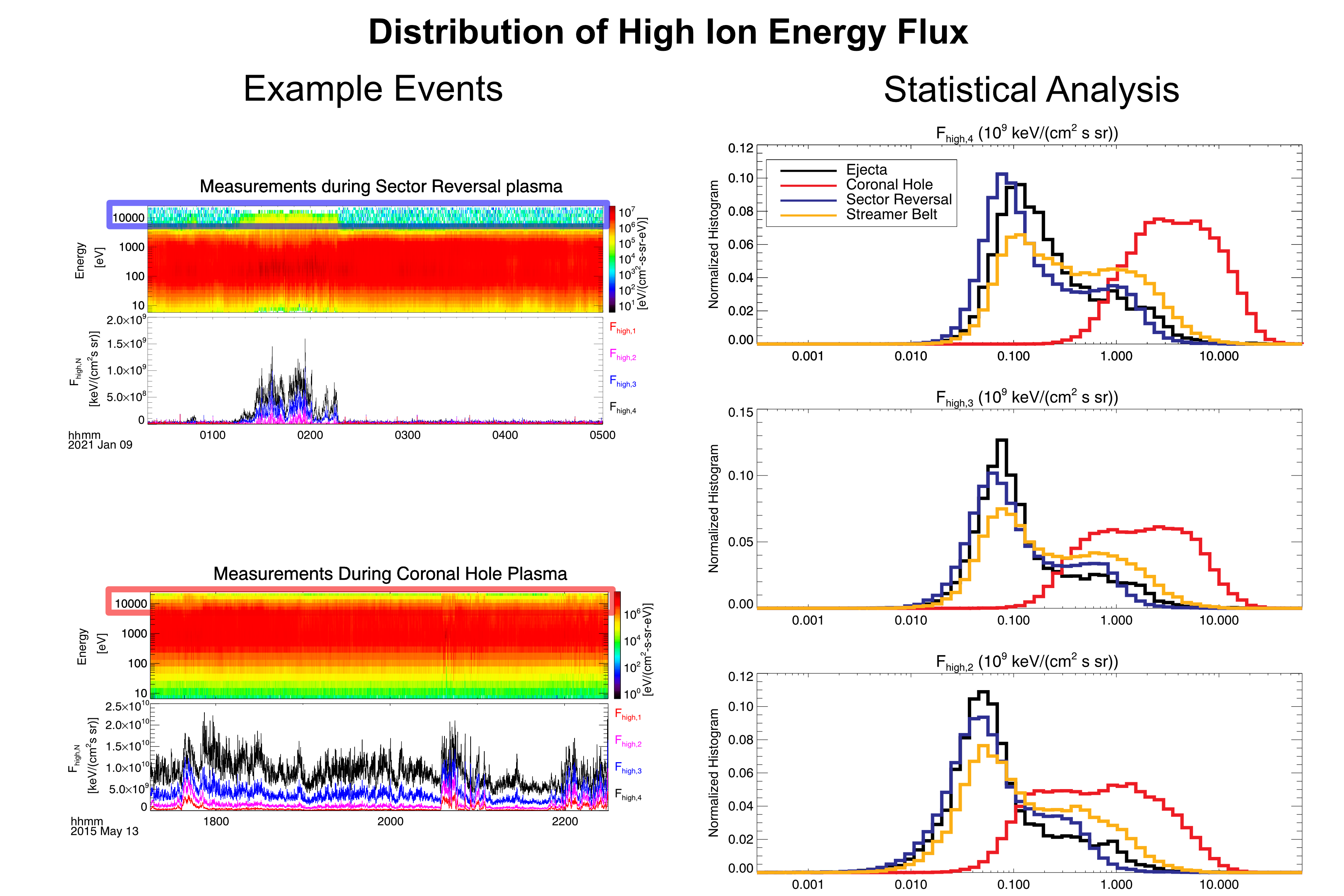The Sun generates a constant stream of particles known as solar wind. This stream of particles behaves similarly to a fluid, with the significant difference that it possesses its own magnetic field. This gives rise to new effects not encountered in classical fluids. Earth's magnetic field shields us from these incoming particles, creating a turbulent boundary layer between interplanetary space and Earth's magnetic field: the so-called magnetosheath. Due to this magnetic field, two different regions emerge in the magnetosheath: regions with increased turbulence and energy, and regions with intense wave formation. Figure 1 illustrates the boundary region between Earth and solar wind, including the two different regions in the magnetosheath.
For the investigation of the effects and impacts on Earth, it is essential to classify these two regions correctly. In this current study, we have demonstrated that classical classification methods fail when fast streams of particles come from the Sun. The cause lies in the increased energy of the particles in the solar wind. Figure 2 illustrates, through examples and statistical results, the different distribution of high-energy particles through different types of solar wind. This work highlights the limitations of existing classification methods and paves the way to overcome these obstacles in future studies. The interdisciplinary approach helps to prevent misinterpretations in the exploration of near-Earth space by incorporating input from solar physics.
The findings were achieved through collaboration between the Institute of Physics, University of Graz, and the Johns Hopkins University Applied Physics Laboratory in Maryland, USA. The project is financially supported by the FWF in project P33285-N in collaboration with the Institute of Space Research of the Austrian Academy of Sciences. The research results will be presented at the international conference EGU24 in Vienna, among others.
Florian Koller, Savvas Raptis, Manuela Temmer, Tomas Karlsson
The Effect of Fast Solar Wind on Ion Distribution Downstream of Earth’s Bow Shock.
The Astrophysical Journal Letters. https://iopscience.iop.org/article/10.3847/2041-8213/ad2ddf

